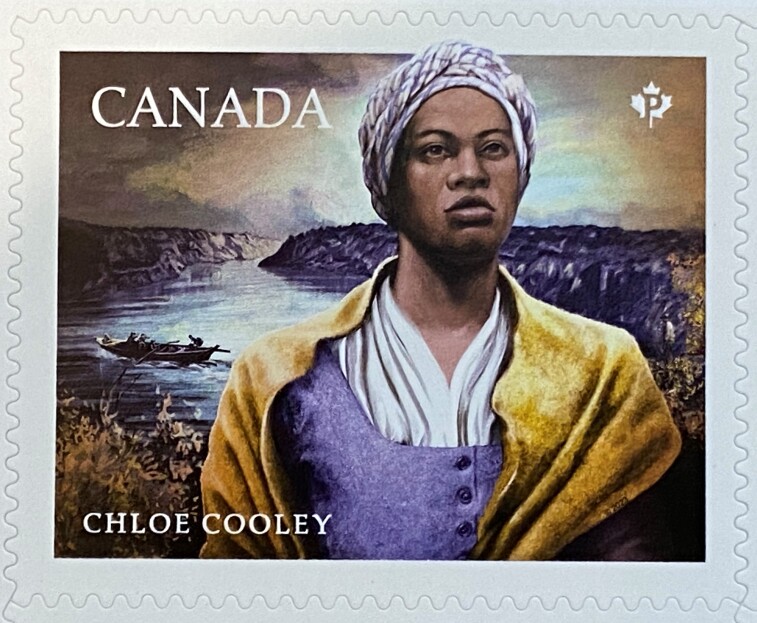
Enslavement in Niagara-on-the-Lake
From 1782 -1803, there were approximately 30 Africans enslaved in Niagara-on-the-Lake, but the stories we have of them are few. Through research, especially the work done by Natasha Henry, president of Ontario's Black History Society, we have been able to find accounts that help us learn what life was like, in some capacity, for those who were enslaved in Niagara-on-the-Lake.
The earliest Black inhabitants in Niagara-on-the-Lake were those enslaved by the United Empire Loyalists settling in our community in the early 1780s. During this period, enslaved Africans were considered property. They did not have any rights as a person, meaning that they could be legally sold, bequeathed, or given as gifts.
One of the most well-known enslaved persons in Niagara-on-the-Lake was Chloe Cooley. She was enslaved by United Empire Loyalist, Adam Vrooman and likely worked as a domestic in his household in Queenston. As a domestic, her forced labour would have included caring for Vrooman’s five children, along with a range of household and farming chores.
Chloe was known to protest her bondage by behaving in “an unruly manner,” refusing work, stealing property, and running away. Her most noted resistance occurred on March 14, 1793, when Vrooman decided to sell her in New York State. During this period, whispers of abolition began circulating amongst slaveholders and those they enslaved. In case the rumours were true, many slaveholders began selling those they enslaved in the United States so that they wouldn’t lose money on their investments.
Chloe resisted her sale by screaming and struggling against Vrooman. Her imminent sale meant that she was now being forced further into slavery, instead of facing the possibility of freedom in Upper Canada.
Her struggles were witnessed by Peter Martin, a Black Loyalist, and William Grisley. They reported this incident to Lt. Gov. John Graves Simcoe, who used what happened to Chloe to introduce legislation abolishing slavery in the province. While we do not know what happened to Chloe once she was sold, her resistance was used to help push forth legislation that would lead to the creation of the Act to Limit Slavery in Upper Canada.
The 1793 anti-slavery legislation created an unusual dynamic in Upper Canada. In Niagara, those still recognized as slaves lived side by side with those legally free under that same Act. Among them were Black loyalists, who were either born free or earned their freedom through service to the British Crown. This was the case with Peter Martin, previously known as Martin Stout, who was instrumental in reporting what happened to Chloe.
Peter Martin and his brother, Richard, were born into slavery and were enslaved by John Butler, whom many consider the founder of Niagara-on-the-Lake. At the start of the American Revolution, the Martin brothers were taken and sold at a public venue, but they managed to escape. They then joined up with John Butler and his corps of Rangers and served with Butler’s Rangers for four and a half years. For their service to the crown, they earned their freedom and were given land grants in Upper Canada. John Butler actually attempted to claim their land grants for himself but was unsuccessful.
Even though Peter was free, he was still chained economically to the Butler family. He chose to continue to work for them in an effort to remain close to his spouse, Pat, his son, George, and his 3-year-old daughter, Jane, who all continued to be enslaved by the Butlers.
In an effort to free his children, Peter petitioned the government for the land that was granted to his now-deceased brother. The government granted his request, and this enabled him to sell the land and purchase his son’s freedom. It is unknown if Martin was able to purchase his wife and daughter’s freedom or if they were later manumitted. By 1834, if still enslaved, Jane and Pat would have been emancipated when slavery was officially abolished in the British Empire.
The 1793 anti-slavery legislation did not immediately free those who were enslaved in the Province. Instead, it set conditions for the gradual abolition of slavery. The reason emancipation did not occur outright was that many members of the government were enslavers or were members of slave-owning families.
Perhaps realizing that he would not be freed outright, Henry Lewis fled his enslavement in Newark (today Niagara-on-the-Lake) for New York.
Years later, Henry wrote to his former enslaver, Provincial Secretary and Registrar, William Jarvis, requesting to buy his freedom. In Henry’s letter, he states his desire to be able to be a free man, to be able to support himself, and to “enjoy all the benefits which may result from being free in a country where a Black man is defended by the laws as much as a white man…”.
Henry also explains that he fled because William’s wife, Hannah, made life unbearable. He believed that no man should have to suffer the way she made him suffer. The confession Henry makes helps us understand, to some degree, the mistreatment those enslaved by the Jarvises may have endured. After Henry outlined the payment method for his freedom, William eventually granted his request.
When the Act to Limit Slavery received Royal Ascent on July 9, 1793, the government of Upper Canada put the colony on a path toward freeing the hundreds of Black men, women, and children who were enslaved in the colony. However, it is important that we not forget the legacy that Chloe Cooley’s resistance had on those that were enslaved in Upper Canada and those that would seek freedom in Canada via the Underground Railroad.
This year is the 230th anniversary of the Chloe Cooley incident and the Act to Limit Slavery in Upper Canada. We will be commemorating Chloe and the legacy that she had on our community in a feature exhibition that will open sometime in the late-Spring.



